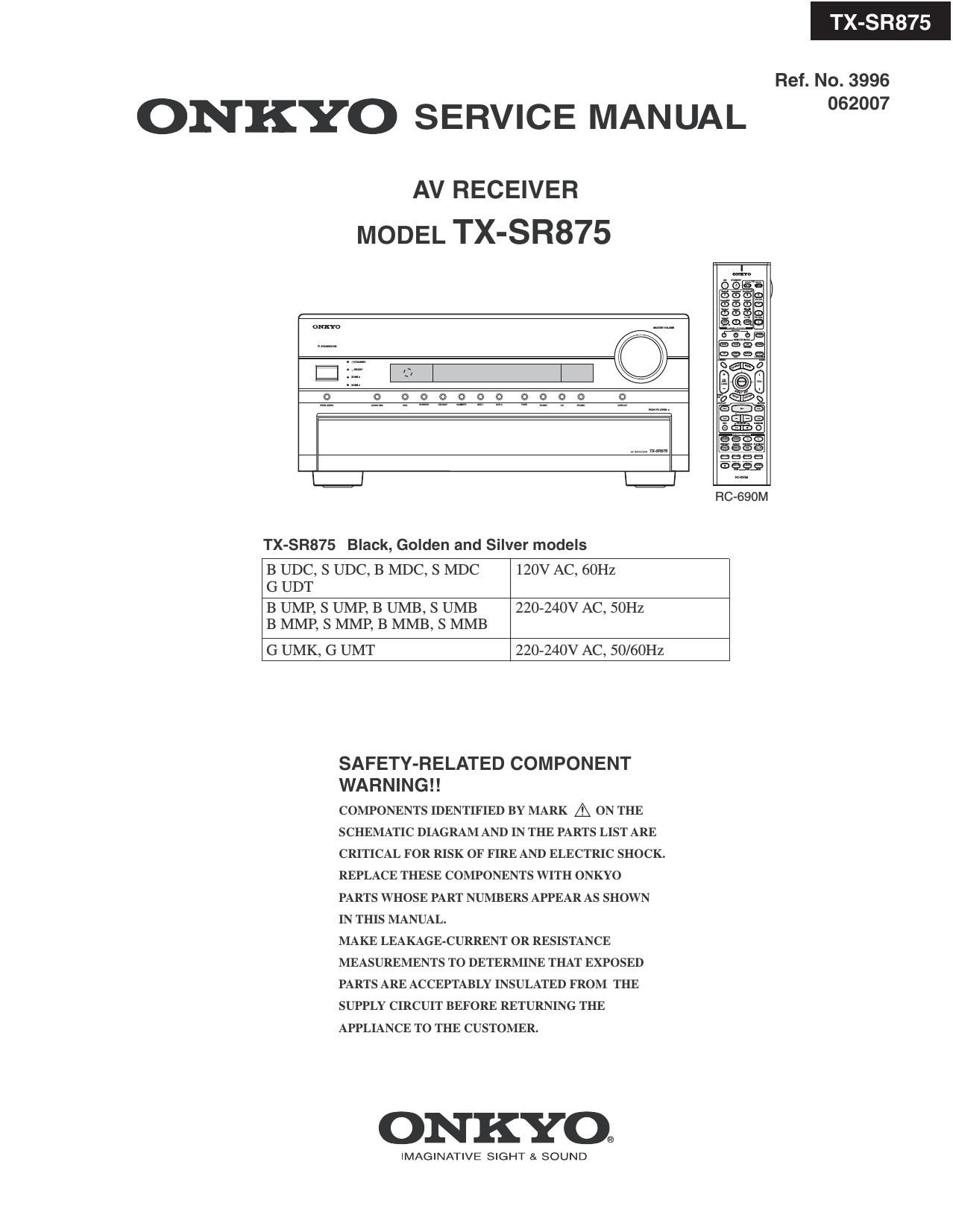Onkyo TXSR 875 Service Manual
This is the 269 pages manual for Onkyo TXSR 875 Service Manual.
Read or download the pdf for free. If you want to contribute, please upload pdfs to audioservicemanuals.wetransfer.com.
Page: 1 / 269
